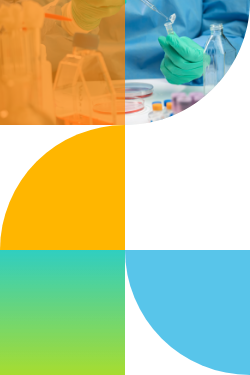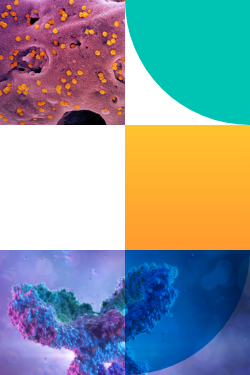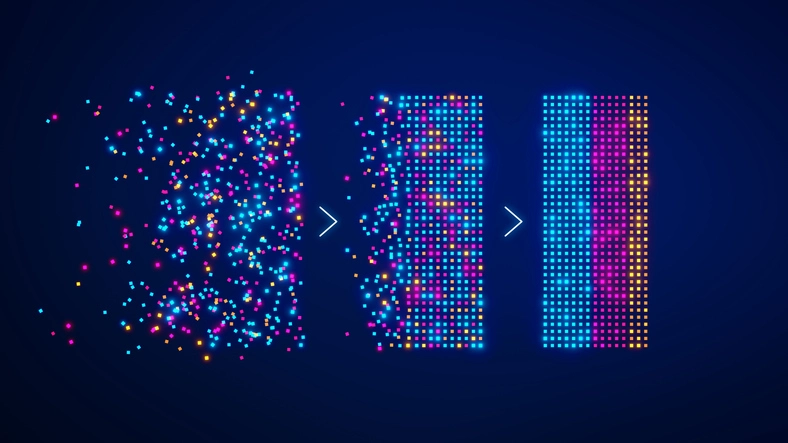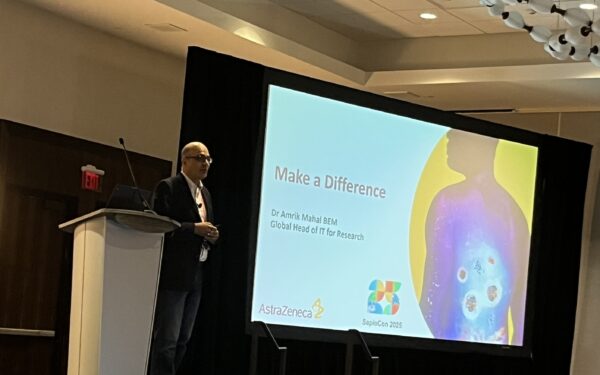Most project scientists working in pharmaceutical research labs are accustomed to manually collecting and processing data to prepare it for modeling. Data abounds in the lab and across the organization, and yet, this information is not immediately usable. Instead, it takes scientists time and effort to access and utilize the information they need to support decision making.
For project scientists, minding the gap between data collection and utilization is a fact of life. But the future of discovery will require another standard to take shape—one that enables scientists to instantly search, visualize, and analyze all their organization’s discovery data within one, unified solution. This type of solution would enable scientists to work faster and smarter, significantly accelerating discovery workflows and powering enhanced decision-making.
In this blog, we’ll discuss how today’s fragmented approaches to scientific data management leave a persistent gap between data and decision. Then, we’ll define a new approach—one that is built upon the principle of unification—and discuss how this translates to tangible value for project scientists and their organizations.
The current approach: fragmentation in data, analysis, and experiments
From research data collection to analysis and experimentation, most project scientists face significant data fragmentation across their entire ecosystem. While many facilities continue to operate this way, this approach introduces a variety of inefficiencies and opportunities for error. Most importantly, this fragmentation delays scientific decision making. Let’s take a closer look:
- Fragmented data sources: In pharmaceutical organizations, data silos are a common problem, where data is scattered across different locations, such as instruments, spreadsheets, and other sources. Even if the organization has a data warehouse or similar solution, it typically doesn’t store or standardize all of the data a project scientist needs as part of their discovery work. Searching and consolidating fragmented data consumes valuable scientist time and delays decision making.
- Fragmented analytical applications: Once scientists find the data they need, they then have to manually prepare and upload it to fragmented applications for modeling and further data analysis. This not only takes time, but also creates added opportunity for error. Working across multiple analytical applications adds complexity, erodes efficiency, and consumes valuable time.
- Fragmented experimental data: Without a single scientific data platform, scientists struggle to find historical data from across their organization. This is particularly inefficient when it comes to experiments. Even if the organization has explored a certain entity before, the data from past experimentation may not be readily available. In turn, project scientists have no choice but to spend time repeating efforts that have already been done.
The Real World Impact of Fragmented Scientific Data
To illustrate the shortcomings of this approach, let’s consider a hypothetical scenario. A project scientist works for a large, multinational pharmaceutical organization that is focused primarily on small molecule discovery and development. One of his current projects involves researching a promising compound to treat an autoimmune disorder.
To retrieve the data he needs, the scientist searches for project assay and structural data from the organization’s data warehouse, but must go to separate repositories to access pharmacokinetic data and crystal structures. Along with the time required to manually prepare the data and upload it to the lab’s preferred modeling application, this takes up to 12 hours of our scientist’s week.
Another critical part of his project involves investigating immune cell population in an animal model using flow cytometry. As he carries out this portion of the project, he starts by entering the experiment into his electronic lab notebook, then carries out sample preparation and staining. From there, he spends 15% of his time defining gating strategies and running cytometry experiments, another 15% collecting output files to transfer to desktop software, 20% loading the files and running analyses, and 10% manually transcribing results within the ELN.
The project scientist faces another barrier in his workflow—his organization has investigated similar immune cell populations in the past that he wants to reference, but when he searches his organization’s data warehouse, he can find only a few measured assay results and no pharmacokinetic data. When looking further into assay results to find experimental data, he cannot access the original data, as the experiments were performed at another site. As a result, the scientist orders reconfirmation assays and pharmacokinetic panels for the entity of interest.
All of this leaves the scientist spending a significant portion of his week on collecting data, preparing it for analysis, and repeating experimentation that has already been done.
The science-aware™ approach: research data unification in support of agile scientific decision making
To overcome the limitations of manual approaches and effectively harness data from across the organization without barriers, project scientists require a data solution that is built for the scale and complexity of their organization’s data.
It is important to note that data refers to information of all kinds—from the most granular instrument data to comprehensive data on historical experiments. No matter the data’s size, structure, or complexity, the scientist’s ability to seamlessly access and analyze information is a key determinant of the speed and quality of decision making.
Here are some of the ways science-aware™ solution can transform the challenges scientists face with manual data management workflows and close the gap between data and decision:
- Standardization for unified data: By bringing together data from different labs, instruments, and experiments in one, unified solution, scientists can bring an end to fragmentation in their organization, seamlessly accessing the information they need without added time and effort.
- Automated processing for unified analysis: A solution that automatically collects data and prepares it for analysis and modeling further alleviates the burden on the scientist, reduces room for error, and accelerates time to decision support.
- Uninhibited data access for unified experiments: A unified platform that stores data from across the entire organization enables scientists to easily search for and utilize historical insights (without the need for SQL or a data scientist), including previous experiments, eliminating time spent on redundant efforts.
To see what this means in action, let’s revisit the project scientist from our hypothetical scenario. With a science-aware™ data platform, he is no longer left to retrieve structural, assay, pharmacokinetic, and other data from separate places. Instead, he can simply search and filter within a single solution to find the data he needs to prepare his model.
Regarding the flow cytometry portion of his project, the scientist creates his ELN entry and carries out sample preparation as usual, but when he gets to defining gating strategies, he can do this directly within the solution. Output files are automatically collected and standardized by the solution, and can then be analyzed and visualized in the same place. Freed of fragmented analytical applications, the project scientist is fully empowered to rapidly analyze and make more informed decisions.
When the scientist goes to reference previous experiments and pharmacokinetic data for his project, he can find them easily, even when they have been carried out at different labs within the organization. Instead of spending hours repeating efforts, he can browse relevant experiments and confirm that the results are reliable in just a few minutes.
Capturing the value of a science-aware™ solution
While it’s clear that the scientist’s workflow becomes much more efficient in our scenario, let’s break down the savings for him and his team in a more tangible way. First, our scientist previously spent 12 hours of his week, or 1.5 days, gathering, preparing, and loading data for analysis. With his new solution, this process is eliminated altogether. Instead, he can go right into visualization, analysis, and modeling. Scaled across the laboratory, each scientists’ throughput is increased 1.4 times, meaning that the overall time it takes to achieve a clinical candidate can be reduced by weeks, depending on the size of the organization.
Regarding the flow cytometry experiment involved in this project, our hypothetical scientist spent 60% of his time defining gating strategies, collecting the data, manually transferring it, running analyses, and transcribing results. With a unified scientific data solution, gating, visualization, and analysis can be done directly within the platform, and data collection is completely automated. Together, these enhancements save up to 35% of the scientist’s time on a given experiment.
The advantages of a science-aware approach to managing scientific data go beyond time savings, though. With less fragmentation and less dependency on manual data collection and loading, the lab can significantly reduce the chance of data errors and discrepancies. In addition, scientists have a more holistic view of their lab’s current and historical data, giving them a fuller picture on which to base their decisions. More still, the organization can reduce or eliminate redundant experimentation altogether, with access to historical data that is standardized, reliable, and easily searchable.
Transform discovery and support data-driven decision-making with Sapio Scientific Data Cloud
Particularly for large pharmaceutical organizations, the volume of scientific data is exponential, and within this data lies tangible insight to drive decision making and inform future projects. However, without a solution that effectively unifies this data, makes it easily searchable, and prepares it for analysis and modeling, scientists lose valuable time and insight.
As the first science-aware™ data platform of its kind, Sapio Scientific Data Cloud SDMS empowers scientists to search, visualize, and analyze unified scientific data from across their organization in a single platform. With Sapio Scientific Data Cloud, pharmaceutical organizations can dramatically enhance and accelerate workflows while enabling more informed and complete decisions.
If you’re interested in learning more about the assumptions behind this blog post or would like to see a demo of Sapio Scientific Data Cloud SDMS, contact Sapio today.





